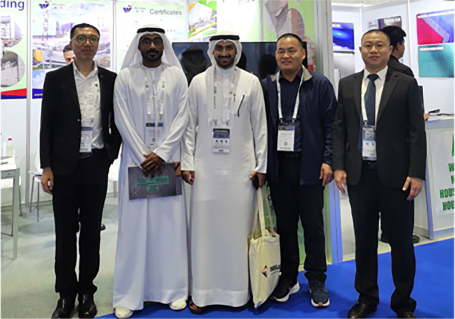
Aug . 06, 2024 08:44 Back to list
Exploring the Versatility and Applications of Hydroxypropyl Methylcellulose in Various Industries
Understanding Cellulose Ether Focus on HPMC
Cellulose ether is a category of compounds derived from cellulose, a natural polymer found in the cell walls of plants. Among the various types of cellulose ethers, Hydroxypropyl Methylcellulose (HPMC) stands out due to its unique properties and wide-ranging applications across multiple industries. This article will delve into what HPMC is, its chemical structure, properties, and its diverse applications.
What is HPMC?
Hydroxypropyl Methylcellulose is a semi-synthetic polymer formed by modifying cellulose through the introduction of hydroxypropyl and methyl groups. This modification enhances the solubility of cellulose in water, making HPMC an effective thickening agent, binder, and film-forming agent. HPMC is commonly produced in various grades, which differ in their levels of hydroxypropyl and methyl substitution. These variations in substitution degrees affect the viscosity, solubility, and other properties that determine its suitability for different applications.
Chemical Structure and Properties
The chemical structure of HPMC comprises a cellulose backbone with hydroxypropyl and methyl groups attached to the hydroxyl groups of the glucose units in cellulose. This modification impacts its physical and chemical properties, such as solubility, thermal stability, and viscosity.
One notable characteristic of HPMC is its ability to dissolve in cold water, forming a clear and viscous solution. The viscosity of HPMC solutions can vary significantly, depending on factors such as concentration and molecular weight. Additionally, HPMC is non-ionic and does not interact with other ionic substances in solutions, making it compatible with a wide range of formulations.
Moreover, HPMC is stable under a range of pH values and is resistant to microbial degradation, which further enhances its utility in various applications. Its film-forming properties allow it to create protective barriers, making it a preferred ingredient in many formulations.
Applications of HPMC
cellulose ether hpmc

HPMC has a broad spectrum of applications across various industries
1. Pharmaceuticals In the pharmaceutical sector, HPMC is widely used as a binding agent in tablet formulations, controlling the release of active ingredients. It is also employed in the production of capsules, providing a vegetarian alternative to gelatin, and in controlled-release drug formulations to enhance bioavailability.
2. Food Industry HPMC is also used as a food thickener, stabilizer, and emulsifier. Its ability to improve texture and mouthfeel makes it popular in bakery products, sauces, dressings, and dairy products. Additionally, it contributes to moisture retention and shelf-life extension.
3. Cosmetics and Personal Care HPMC serves as a suspending agent and thickener in cosmetic formulations, enhancing the viscosity of lotions, creams, and gels. Its film-forming characteristics help to provide a smooth application and long-lasting effects.
4. Construction In the construction sector, HPMC is utilized as an additive in cement-based products. Its inclusion helps improve workability, adhesion, and water retention in mortars and plasters.
5. Agriculture HPMC finds application in agriculture, particularly in pesticides and fertilizers, where it aids in the uniform distribution of active ingredients and enhances the adhesion of spray solutions to plant surfaces.
Conclusion
Hydroxypropyl Methylcellulose is a versatile cellulose ether with extensive applications that span pharmaceuticals, food, cosmetics, construction, and agriculture. Its unique properties, including solubility in water, thickening abilities, and film-forming characteristics, make it an invaluable ingredient in various formulations. As industries continue to evolve, the demand for HPMC is expected to grow, driven by its multifunctionality and effectiveness in diverse applications. Understanding and harnessing the properties of HPMC can lead to innovative solutions that enhance product performance and consumer satisfaction.
-
Versatile Hpmc Uses in Different Industries
NewsJun.19,2025
-
Redispersible Powder's Role in Enhancing Durability of Construction Products
NewsJun.19,2025
-
Hydroxyethyl Cellulose Applications Driving Green Industrial Processes
NewsJun.19,2025
-
Exploring Different Redispersible Polymer Powder
NewsJun.19,2025
-
Choosing the Right Mortar Bonding Agent
NewsJun.19,2025
-
Applications and Significance of China Hpmc in Modern Industries
NewsJun.19,2025







